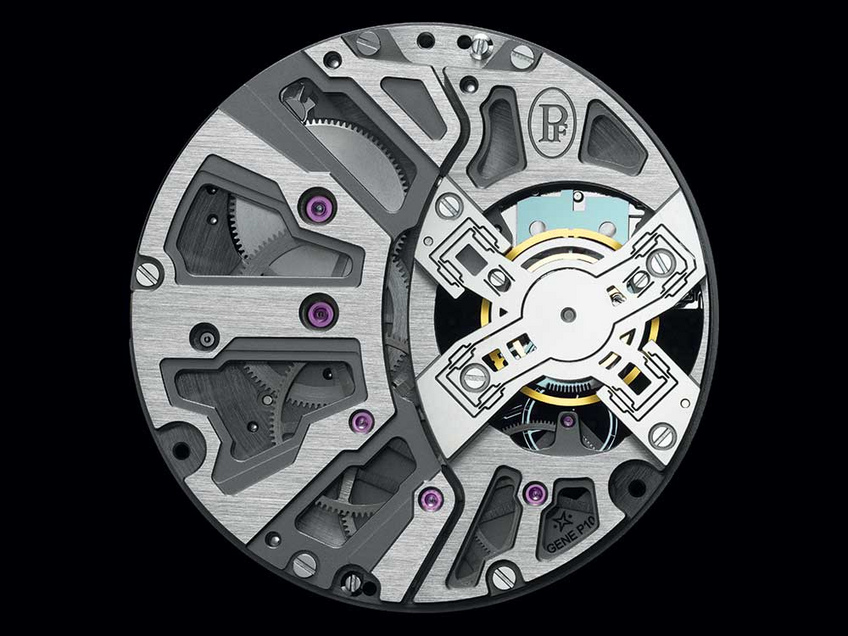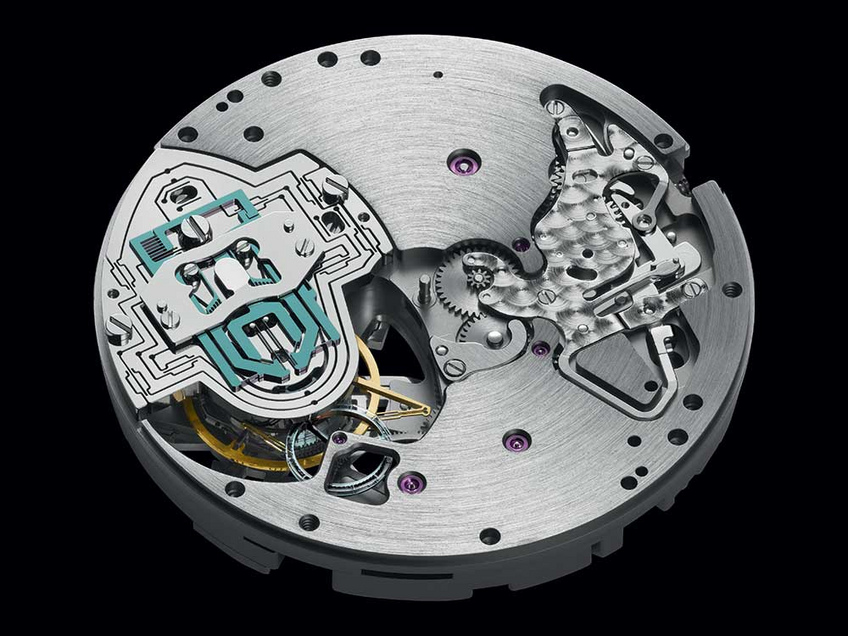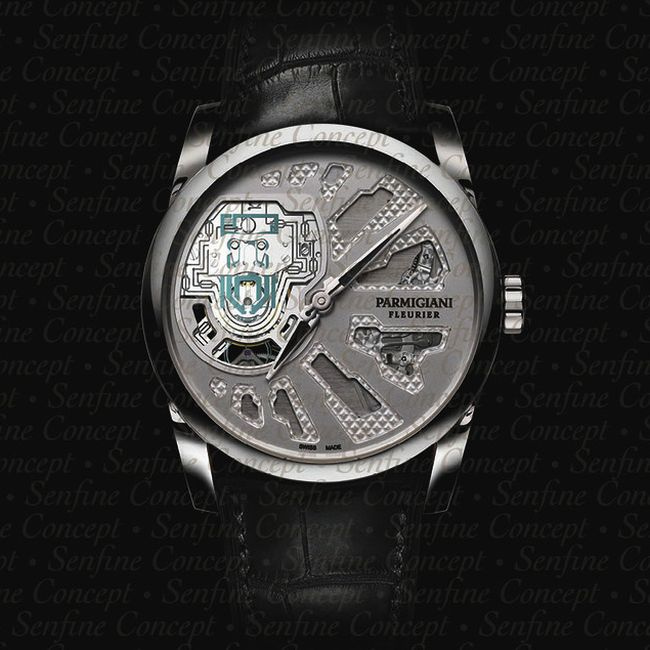

Parmigiani Fleurier Senfine: the long way towards a suspended future
The quest for the perpetual movement is like watchmakers’ philosopher stone. The new Senfine calibre seems to bring Parmigiani Fleurier pieces which have it closer to the asymptote. Faustian!
The name of this amazing and attractive product is in itself an invitation to plunge into the history of watchmaking. The word Senfine comes from Esperanto, a universal language invented at the turn of the nineteenth century that aimed to bring people closer to each other. If the number of cases is anything to go by, Swiss watchmakers, such as Movado (moving), took a liking to the language. As everyone will have understood – that was the goal, anyway – Senfine symbolizes an infinite space; something that has no end; something eternal. That is the aim of all quests!
Always aiming to reach farther
During the presentation at SIHH 2016 of the new hand-wound mechanical caliber with a new regulation mechanism, the public focused its attention on the power reserve.

However, it is not the only innovation brought about by this remarkable heart, a product from which we should expect much more than allowing the piece to work for an exceptionally long time without needing to be wound.
It is worth mentioning, though, that the mechanical caliber unveiled at the show was a prototype, an element of a work in progress at Parmigiani Fleurier’s workshops. According to its designers, the choice to reveal part of what will no doubt be a revolution in watchmaking reflects their belief that it is important to share discoveries at certain stages of the development of a major change. Indeed, there is no such thing as spontaneous generation and the evolution of science and ideas is the result of the exchange between relevant individuals. And what an exchange!
Parmigiani Fleurier presents the Senfine concept
Taking a different perspective to achieve one’s goal
In recent years, we have seen watches gain two days of autonomy because management demanded that quality mechanical timepieces could go a weekend without needing to be wound. From a purely practical point of view, this is a relevant idea as not everyone has a watch oscillator to arm the barrel spring after taking the piece off the wrist.
But as Takahiro Hamaguchi, head of Vaucher’s Movement Development, said: "The watchmaking industry has been content until now to increase the supply of energy to have a watch running for as long as possible". Florin Niculescu, Product Development at Parmigiani added:" ... it is as though in order to keep a car running for twice as long, manufacturers simply doubled the fuel load ". Life is full of twists and watchmakers at Parmigiani Fleurier could have just stopped searching after finding that a traditional caliber needs quite a lot of energy. However, their desire to excel was driven some years ago by a mechanical concept developed by Pierre Genequand, a Genevan engineer and former employee at CSEM (Swiss Center for Electronics and Microtechnology.)
The WatchesTV presents the Parmigiani Fleurier Senfine
Suspended revolution
The Senfine calibre, which took watchmakers and engineers at Parmigiani Fleurier 6 years to finish, is the culmination of the principle presented as a model by Genequand.
As emphasized by Niculescu, the basic research carried out by a specialist in friction reduction served as a basis to solve most of the energy expenditure problems faced in the past. Genequand is not a watchmaker and did not, hence, design his invention in the same way a watchmaker would have done it. Yet, it is thanks to his contribution that traditional watchmakers have felt prepared to challenge two centuries of knowledge and customs. Thus, they have set to work on his proposal with new eyes in order to reconsider with detachment the inner workings of this new type of heart.

By exploiting the friction-free properties of flexible joints, the engineer, who specializes in space technology, made the first approach to tackling friction from the opposite side. He therefore managed to adapt aerospace technology to the infinitely small size required in watchmaking. Once done, artisan mechanics of the engine division of Vaucher Manufacture Fleurier were able to take over and give it a more watch-relevant meaning.
From a crazy idea to an actual product
It becomes obvious just by looking at it, but this new regulator would not have been possible without the existence of new technologies such as the “Drie”, the acronym for Deep Reactive Ion Etching. Indeed, in this creation some of the piece’s monobloc components have parts so extremely fine that they can only be manufactured using this cutting technique. Result: the Senfine oscillator has flexible structure guides (read: micro leaf springs) whose bending angle does not exceed 16° (whereas a conventional balance oscillates between 240° and 320°). It replaces both the spiral – with its booster effect – but also the pivots since the piece is also driven by these two plates intersecting at the center of the amazing yet sober disc.

The suspended pendulum (obviously working without friction) also includes an anchor whose movements seem to escape the Joule effect that claims that every single movement consumes energy. In the end, the ultra-coherent, regulated by an exhaust-called "grasshopper" in permanent contact and high yield (16 hertz), and inspired by the one developed by John Harrison in the first half of the eighteenth century for its first marine clock (H1), consumes very little energy in spite of the high frequency.
In the future, the accurate new movement should be able to operate for several weeks with a single barrel in which energy is normally degraded in 48 hours in a classic watch. Further, it has been optimized during 2016 to pass the tests of the Swiss Official Chronometer Control. Who can take this up a level?


